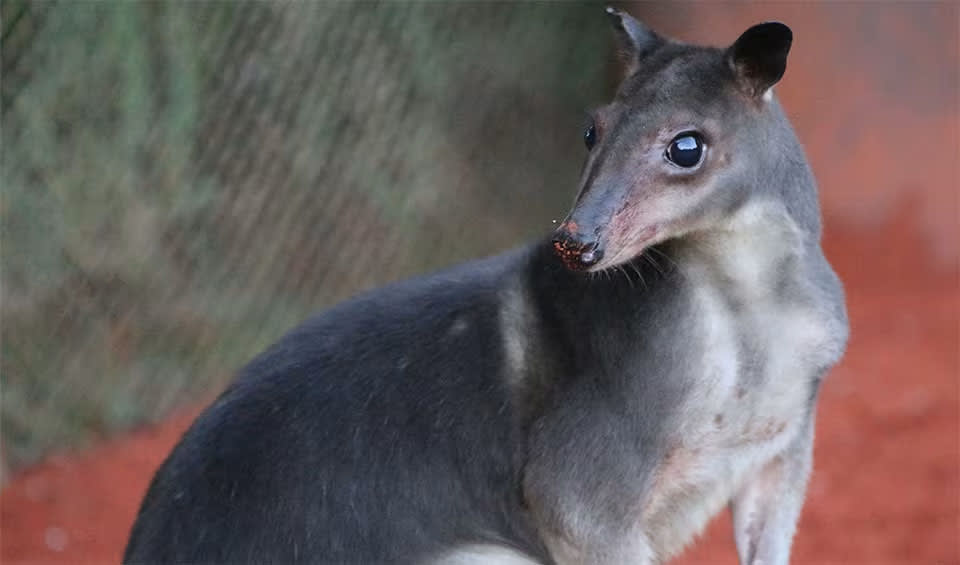Unlike many other wallabies, the White-striped dorcopsis is primarily a browser, feeding on leaves, fruits, and shrubs rather than grass. However, its dietary preferences extend beyond vegetation, as it has been observed to exhibit opportunistic feeding behavior by turning over flat stones during daylight hours to search for insects and other small organisms. This versatile diet not only provides the White-striped dorcopsis with essential nutrients but also highlights its adaptability in utilizing various food sources within its forest habitat.
In addition to its herbivorous tendencies, the White-striped dorcopsis plays a vital role in ecosystem health by contributing to the dispersal of fungal spores. While foraging, it occasionally consumes the fruiting bodies of fungi, inadvertently ingesting spores that are later dispersed in its feces. This process facilitates the colonization of new areas by fungi and promotes the establishment of healthy mycorrhizal communities, which are essential for nutrient cycling and plant health in the forest ecosystem.
Reproductive behavior in the White-striped dorcopsis is another fascinating aspect of its biology. Breeding typically occurs between January and April, with females giving birth to single offspring. The young are born in a relatively undeveloped state and complete their development within the safety of their mother’s pouch. This unique reproductive strategy ensures the survival of the offspring in the challenging forest environment, providing them with essential protection and nourishment during their early stages of life.
Despite its specialized diet and reproductive behaviors, the White-striped dorcopsis is fortunate to inhabit suitable tropical forests with stable populations. As a result of its relatively abundant distribution and healthy population numbers, the species is currently classified as Least Concern on the IUCN Red List of Threatened Species.
Distribution
 Indonesia
Indonesia Papua New Guinea
Papua New GuineaAnything we've missed?
Help us improve this page by suggesting edits. Glory never dies!
Suggest an editGet to know me
Terrestrial / Aquatic
Altricial / Precocial
Polygamous / Monogamous
Dimorphic (size) / Monomorphic
Active: Diurnal / Nocturnal
Social behavior: Solitary / Pack / Herd
Diet: Carnivore / Herbivore / Omnivore / Piscivorous / Insectivore
Migratory: Yes / No
Domesticated: Yes / No
Dangerous: Yes / No




